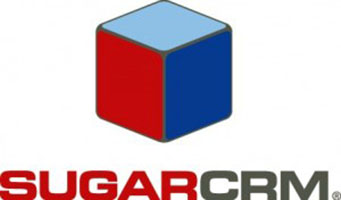
In this tutorial, we will show you how to install and configuration of SugarCRM on your CentOS 7. For those of you who didn’t know, SugarCRM is a popular customer relationship management system that has an open-source version, SugarCRM Community Edition, with many devoted Linux users. It provides many functions such as activity management, contacts, accounts, campaigns, web-to-lead forms, dashboards, email clients and marketing, project management, bug tracking, shared calendars, etc. that allow maximum management for business and client relationships.
This article assumes you have at least basic knowledge of Linux, know how to use the shell, and most importantly, you host your site on your own VPS. The installation is quite simple and assumes you are running in the root account, if not you may need to add ‘sudo‘ to the commands to get root privileges. I will show you the step-by-step installation of SugarCRM on a CentOS 7 server.
Prerequisites
- A server running one of the following operating systems: CentOS 7.
- It’s recommended that you use a fresh OS install to prevent any potential issues.
- SSH access to the server (or just open Terminal if you’re on a desktop).
- A
non-root sudo useror access to theroot user. We recommend acting as anon-root sudo user, however, as you can harm your system if you’re not careful when acting as the root.
Install SugarCRM on CentOS 7
Step 1. First, let’s start by ensuring your system is up-to-date.
yum clean all yum -y update
Step 2. Disable Selinux on CentOS 7.
Run the below command to update SELinux:
setenforce 0
sed -i 's/enforcing/disabled/' /etc/sysconfig/selinux
sed -i 's/enforcing/disabled/' /etc/selinux/configStep 3. Install the LAMP server.
A CentOS 7 LAMP stack server is required. If you do not have LAMP installed, you can follow our guide here. Also, install the required PHP modules:
yum -y install php-gd php-imap php-ldap php-odbc php-pear php-xml php-xmlrpc php-mbstring php-mcrypt php-mssql php-snmp php-soap php-tidy curl curl-devel
You’ll need to also adjust some settings in your php.ini. Open up the file and edit:
nano /etc/php.ini
Also, add/modify the following settings:
; Maximum allowed size for uploaded files. ; http://php.net/upload-max-filesize upload_max_filesize = 25M
After you update the configuration, you have to restart httpd services to implement the saved changes:
systemctl restart httpd.service
Step 4. Installing SugarCRM.
The first thing to do is to go to SugarCRM’s download page and download the latest stable version of SugarCRM, At the moment of writing this article it is version 6.5.24:
wget https://nchc.dl.sourceforge.net/project/sugarcrm/1 - SugarCRM 6.5.X/SugarCommunityEdition-6.5.X/SugarCE-6.5.24.zip
Unpack the SugarCRM archive to the document root directory on your server:
unzip SugarCE-6.5.24.zip rm -rf /var/www/html/* cd SugarCE-Full-6.5.24/ cp -R * /var/www/html/
We will need to change some folders permissions:
cd /var/www/html/
chmod 755 custom/ cache/ modules/ upload/
chmod 755 config.php config_override.php
chown -R apache. *Step 5. Configuring MariaDB for SugarCRM.
By default, MariaDB is not hardened. You can secure MariaDB using the mysql_secure_installation script. you should read and below each step carefully which will set a root password, remove anonymous users, disallow remote root login, and remove the test database and access to secure MariaDB:
mysql_secure_installation
Configure it like this:
- Set root password? [Y/n] y - Remove anonymous users? [Y/n] y - Disallow root login remotely? [Y/n] y - Remove test database and access to it? [Y/n] y - Reload privilege tables now? [Y/n] y
Next, we will need to log in to the MariaDB console and create a database for the SugarCRM. Run the following command:
mysql -u root -p
This will prompt you for a password, so enter your MariaDB root password and hit Enter. Once you are logged in to your database server you need to create a database for SugarCRM installation:
CREATE USER sugar@localhost;
SET PASSWORD FOR 'sugar'@'localhost' = PASSWORD("sugar-password");
GRANT ALL PRIVILEGES ON sugarcrm.* TO 'sugar'@'localhost' IDENTIFIED BY 'sugar-password' WITH GRANT OPTION;
flush privileges;
exit
Step 6. Configuring Apache web server for SugarCRM.
We will create an Apache virtual host for your Orangescrum website. First, create ‘/etc/httpd/conf.d/vhosts.conf’ file with using a text editor of your choice:
nano /etc/httpd/conf.d/vhosts.conf IncludeOptional vhosts.d/*.conf
Next, create the virtual host:
mkdir /etc/httpd/vhosts.d/ nano /etc/httpd/vhosts.d/yourdomain.com.conf
Add the following lines:
<VirtualHost YOUR_SERVER_IP:80> ServerAdmin webmaster@yourdomain.com DocumentRoot "/var/www/html/" ServerName yourdomain.com ServerAlias www.yourdomain.com ErrorLog "/var/log/httpd/yourdomain.com-error_log" CustomLog "/var/log/httpd/yourdomain.com-access_log" combined <Directory "/var/www/html/"> DirectoryIndex index.html index.php Options FollowSymLinks AllowOverride All Require all granted </Directory> </VirtualHost>
Save and close the file. Restart the apache service for the changes to take effect:
systemctl restart httpd.service
Step 7. Accessing SugarCRM.
SugarCRM will be available on HTTP port 80 by default. Open your favorite browser and navigate to http://your-domain.com/ or http://your-server-ip and complete the required steps to finish the installation. If you are using a firewall, please open port 80 to enable access to the control panel.
Congratulations! You have successfully installed SugarCRM. Thanks for using this tutorial for installing SugarCRM on CentOS 7 system. For additional help or useful information, we recommend you check the official SugarCRM website.